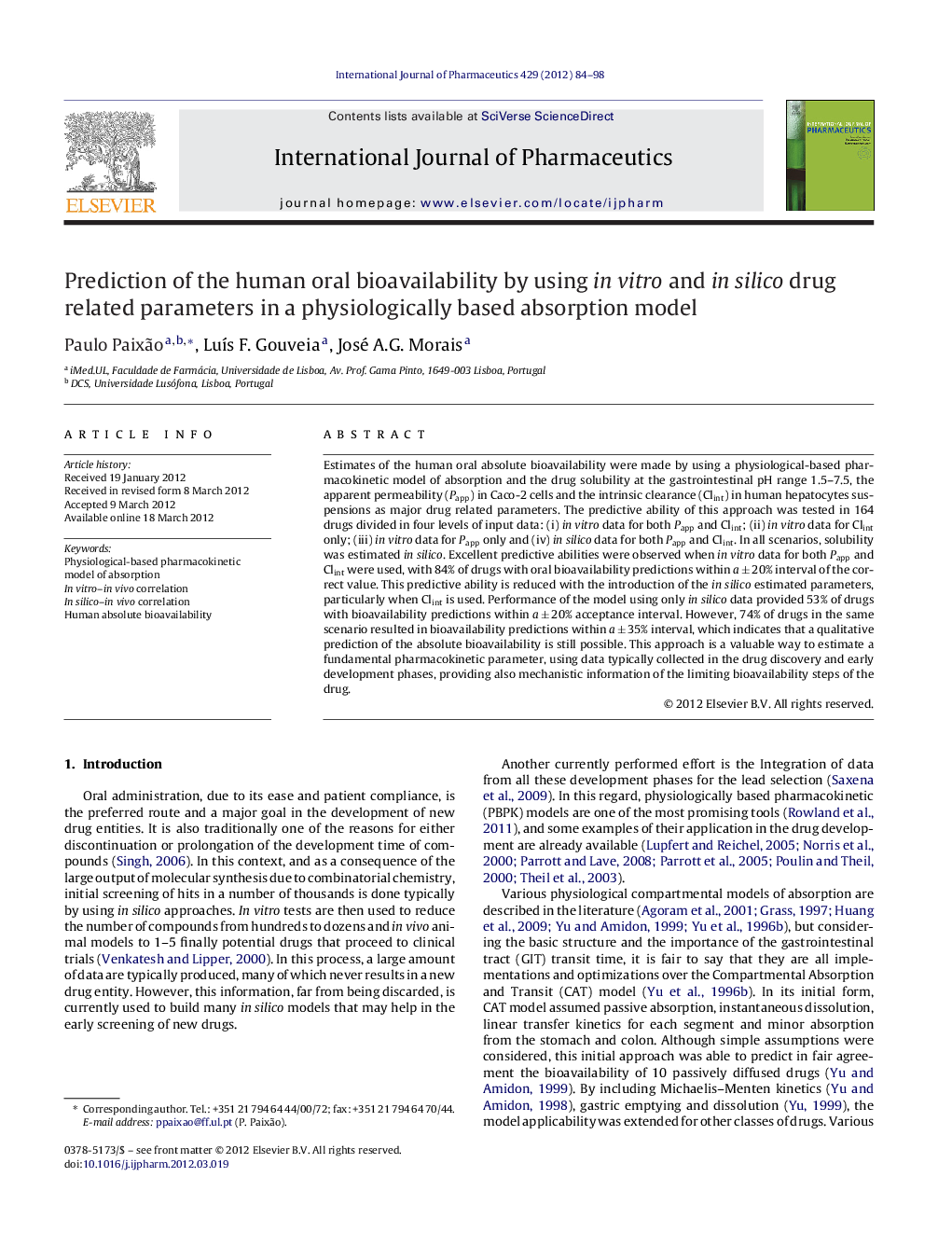| Article ID | Journal | Published Year | Pages | File Type |
|---|---|---|---|---|
| 2502969 | International Journal of Pharmaceutics | 2012 | 15 Pages |
Estimates of the human oral absolute bioavailability were made by using a physiological-based pharmacokinetic model of absorption and the drug solubility at the gastrointestinal pH range 1.5–7.5, the apparent permeability (Papp) in Caco-2 cells and the intrinsic clearance (Clint) in human hepatocytes suspensions as major drug related parameters. The predictive ability of this approach was tested in 164 drugs divided in four levels of input data: (i) in vitro data for both Papp and Clint; (ii) in vitro data for Clint only; (iii) in vitro data for Papp only and (iv) in silico data for both Papp and Clint. In all scenarios, solubility was estimated in silico. Excellent predictive abilities were observed when in vitro data for both Papp and Clint were used, with 84% of drugs with oral bioavailability predictions within a ± 20% interval of the correct value. This predictive ability is reduced with the introduction of the in silico estimated parameters, particularly when Clint is used. Performance of the model using only in silico data provided 53% of drugs with bioavailability predictions within a ± 20% acceptance interval. However, 74% of drugs in the same scenario resulted in bioavailability predictions within a ± 35% interval, which indicates that a qualitative prediction of the absolute bioavailability is still possible. This approach is a valuable way to estimate a fundamental pharmacokinetic parameter, using data typically collected in the drug discovery and early development phases, providing also mechanistic information of the limiting bioavailability steps of the drug.
Graphical abstractFigure optionsDownload full-size imageDownload high-quality image (172 K)Download as PowerPoint slide
